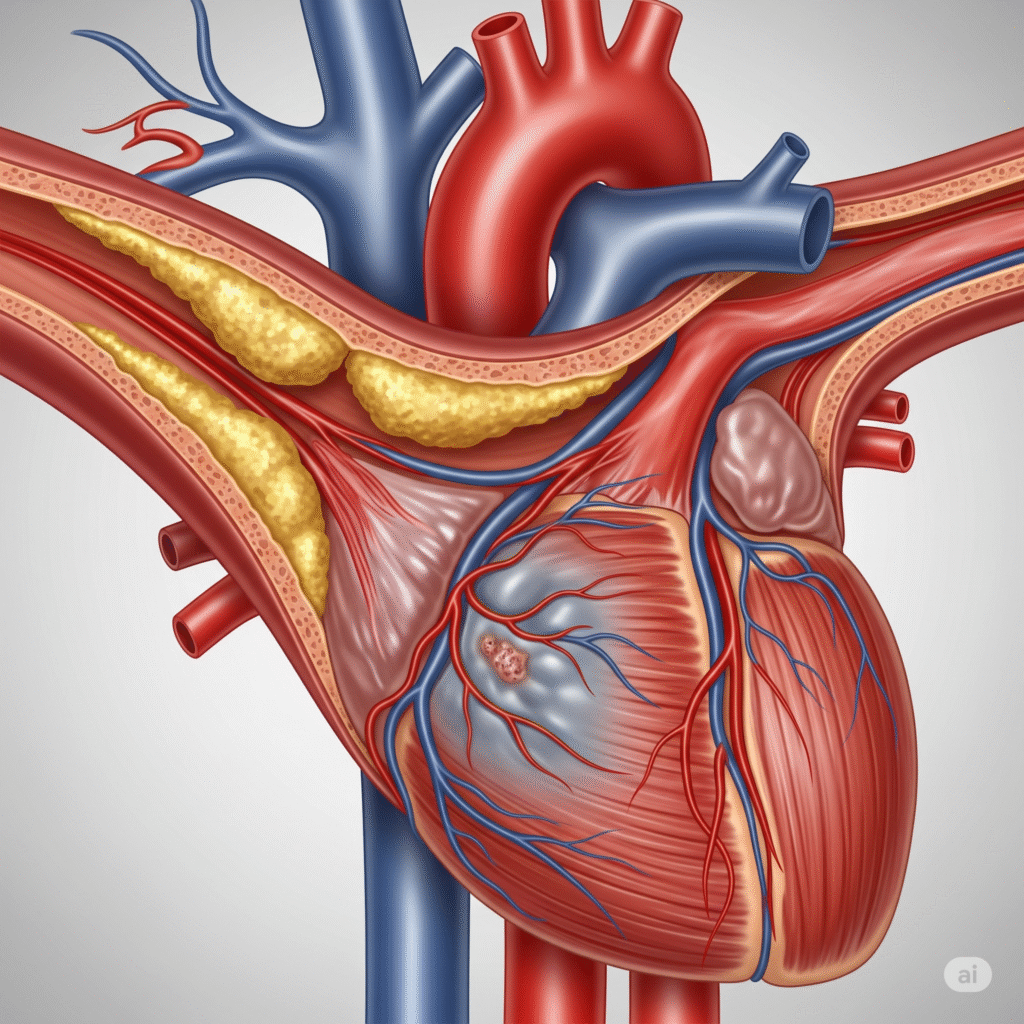Ischemic heart disease
Introduction
Ischemic heart disease (IHD) is a condition due to reducing blood supply to the heart muscle due to compressed or blocked coronary arteries. This is a major global cause of death, which is responsible for about 9 million deaths annually. IHD usually contains chest pain (angina), heart attack and heart failure. While treatments such as medication, stent and surgery are available, they cannot fully treat the disease. Preventive care through lifestyle changes is essential for long -term heart health.

Types of Ischemic heart disease
Stable angina
Physical activity or chest pain arising from stress, relaxation or medication was relieved.
Unstable angina
Suddenly, unexpected chest pain that can be relaxed and indicates a high risk of heart attack.
Myocardial infarction
Complete obstruction of a coronary artery causes permanent damage to the heart muscle.
Silent ischemia
Blood flow in the heart is reduced without noticeable symptoms, often found during regular tests.
Causes IHD (Ischemic heart disease)
- Fatty plaque buildup in the arteries reduces heart's oxygen and blood supply.
- Hypertension damages the arteries, encouraging plaque formation and heart complications.
- The high cholesterol level increases the risk of formation of plaque in the coronary arteries.
- Smoking reduces arteries, reduces oxygen, and promotes blood clots in vessels.
- Diabetic damages blood vessels and increases inflammation, which increases the risk of heart disease.
- Obesity contributes to high blood pressure, diabetes and cholesterol, which increases the heart stress.
- Lack of physical activity weakens the heart and encourages other risk factors.
- Unhealthy diet increases cholesterol, blood sugar, and promotes arterial plaque buildup.
- Alcohol abuse increases blood pressure and weakens the heart muscle over time.
- Stress increases heart rate and blood pressure, promotes unhealthy copy habits.
- Family history increases arterial obstruction and genetic risk for heart disease.
- The aging weakens the arteries and increases the possibility of plaque buildup in the ships.
- Due to hormonal differences, males first begin heart disease.
Clinical features of IHD:
Chest pain
A pressure or squeezing pain is often triggered by hard work or emotional stress.
Difficulty breathing
Physical activity occurs due to low oxygen supply to the heart muscles.
weakness
Mango in IHD patients, especially after minimal diligence, due to poor heart efficiency.
Palpitations
A feeling of rapid, fluttering or irregular heartbeat due to decrease in blood flow.
Inflammation in the legs or ankles
Indicates the phase of heart failure where the heart cannot effectively pump blood, which can lead to fluid retention.
Symptoms associated with Ischemic heart disease
- Chest pain or tightness, often radiating the left hand, neck or jaw.
- Shortness of breath, especially during physical activity or while lying down.
- Mild physical exertion or excessive fatigue even after daily tasks.
- Nausea or vomiting especially during a heart attack.
- Dizziness or light, sometimes leads to unconsciousness.
- Felt as a rapid or irregular heartbeat as a beat or fluttering.
- Cold sweating without physical activity or due to discomfort of the chest.
- Swelling of the feet, ankles or legs due to poor circulation.
Investigations in Ischemic heart disease
- The unusual heart rhythm and the signs of the previous or current heart attack detect.
Uses ultrasound to assess the heart structure, speed and pumping efficiency.
Evaluate heart function under physical stress or exercise conditions.
A special X-ray test using contrast dye to imagine obstructions in the coronary arteries.
Identify the heart muscle damage and measure cholesterol levels and cardiac enzymes.
A non-invasive scan reflects coronary artery obstacles and plaque buildups.
